To ensure the safety of your electrical system, an AC capacitor should be tested with a multimeter. To ensure that your capacitor is operating properly, follow the instructions in this guide on how to test AC capacitors with a multimeter. This straightforward procedure has only a few steps. It's also a great way to test the functionality of your capacitor. So, let's get started!
Possible causes of a failed capacitor:
· Overvoltage:
If a capacitor is supplied with an excessive voltage, it may be damaged or even destroyed.
· Operating Temperature:
If the operating temperature of a capacitor exceeds its specified maximum rating, it will likely fail prematurely.
· Poor Quality Components:
Capacitors assembled with inferior-quality components can lead to early failures.
· Contamination:
Foreign substances such as dust and moisture can cause corrosion of the capacitor’s internal components, leading to failure.
· Aging:
Over time, capacitors can naturally degrade due to chemical reactions in their internal layers which lead to decreased capacitance and eventual failure.
It is important to identify the cause of a failed capacitor to take corrective action and prevent future failures. An investigation into the environment, operating conditions, and quality of components used can help determine the root cause. Proper selection, installation, and maintenance of capacitors can help ensure that they perform reliably for their expected lifetime.
Tips for prolonging the life of your capacitor:
- Avoid placing capacitors in high-temperature environments, as this can reduce their lifespan significantly. Make sure to keep your capacitor in a cool and dry location.
- Ensure that the capacitor remains out of direct sunlight and away from moisture as much as possible since these conditions can cause it to corrode or degrade over time.
- Check the voltage rating on the capacitor before using it. Using too high of a voltage can cause the capacitor to short-circuit and fail prematurely.
- When replacing an old capacitor, use one with the same or higher capacitance value, so that its performance is not impaired by low-value components such as resistors or transistors.
- Use a properly-sized capacitor for the application. If the capacitance value is too low, it won't be able to store enough energy and may not be able to handle sudden voltage changes or surges.
- Clean any dirt or debris off of the capacitor before installing it in your system. This will help ensure that its performance remains at an optimal level over time.
- When soldering the capacitor onto a circuit board, make sure that all connections are secure by checking with a multimeter before powering up the system.
- Periodically check your capacitors for any signs of physical damage or corrosion, as any visible defects can lead to premature failure or even an electrical fire.
By following these tips, you can ensure that your capacitor will have a long and reliable service life. With proper maintenance and care, it should be able to provide many years of dependable performance.
How to test an AC capacitor with a multimeter?
To test an Alternative Current (AC) capacitor with a multimeter, you will need the following materials:
- Multimeter
- AC Capacitor
First, set your multimeter to measure capacitance values. Then, connect both terminals of the capacitor to the probes of the multimeter. The value you get is that of the capacitor’s capacitance in Farads. To be sure of accurate readings, it is important to ensure that there are no external connections or circuits connected to either terminal of the capacitor when testing.
Once you have taken the reading and written down the value for reference, disconnect both terminals from the multimeter and then repeat this process until you receive consistent results. If you receive inconsistent results, it is likely that the capacitor may be defective and should be replaced.
It is important to note that excessive current flows through the capacitor when testing. Therefore, it is best to limit your test duration to a few seconds to prevent any damage from occurring.
With these simple steps, you can safely and quickly test an AC capacitor with a multimeter. Remember to always take precautions when working with electrical components and consult an expert if necessary.
Frequently Asked Questions:
What type of multimeter is best for testing an AC capacitor?
A digital or analog multimeter that is capable of measuring capacitance (in Farads) will be the most accurate and reliable option for testing an AC capacitor. Be sure to read the instructions carefully before attempting to use your multimeter, as some models may require more setup and safety precautions than others.
How can I prepare my multimeter before using it to test a capacitor?
Before you begin testing an AC capacitor with a multimeter, make sure it has been calibrated according to the manufacturer’s instructions. Set up any additional features or accessories (such as leads, connectors, etc.) that may be necessary for measuring the capacitor accurately. Also, ensure the multimeter is powered on and set to measure capacitance in Farads (or microFarads).
How do I attach the multimeter’s probes to the AC capacitor?
Your multimeter will have two leads for attaching to a component: one red and one black (or sometimes white). Attach the red lead to the positive terminal of the capacitor and the black or white lead to the negative terminal.
How will my multimeter indicate a successful test?
If your multimeter is set up correctly, you should see a capacitance value (in Farads or microFarads) after attaching your probes. If this value is within range of what appears on the capacitor’s label, then your test was successful.
Final Note:
Testing an AC capacitor with a multimeter is a straightforward process. By following the steps outlined above, it is possible to determine the condition of an AC capacitor in a relatively short amount of time. While this method can be used as a means of troubleshooting, it should always be verified by a professional for definitive results. Taking these precautions ensures that your electrical devices are operating correctly and safely. With the right tools and knowledge, you can easily test an AC capacitor with a multimeter.

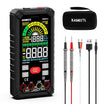
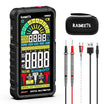
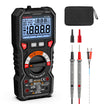
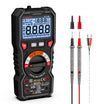

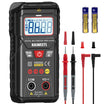
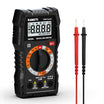
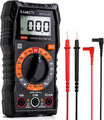
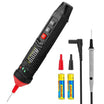
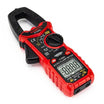
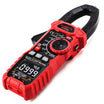
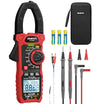
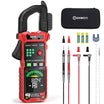

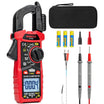


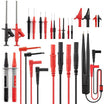



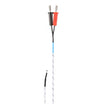
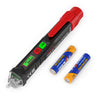
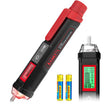


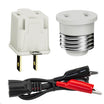
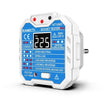
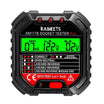
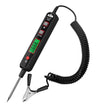
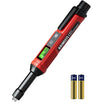

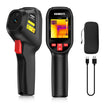
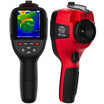



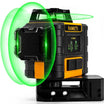






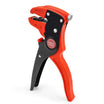
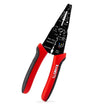





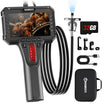
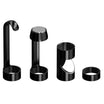
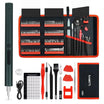



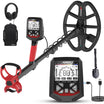







Leave a comment
All comments are moderated before being published.
This site is protected by hCaptcha and the hCaptcha Privacy Policy and Terms of Service apply.